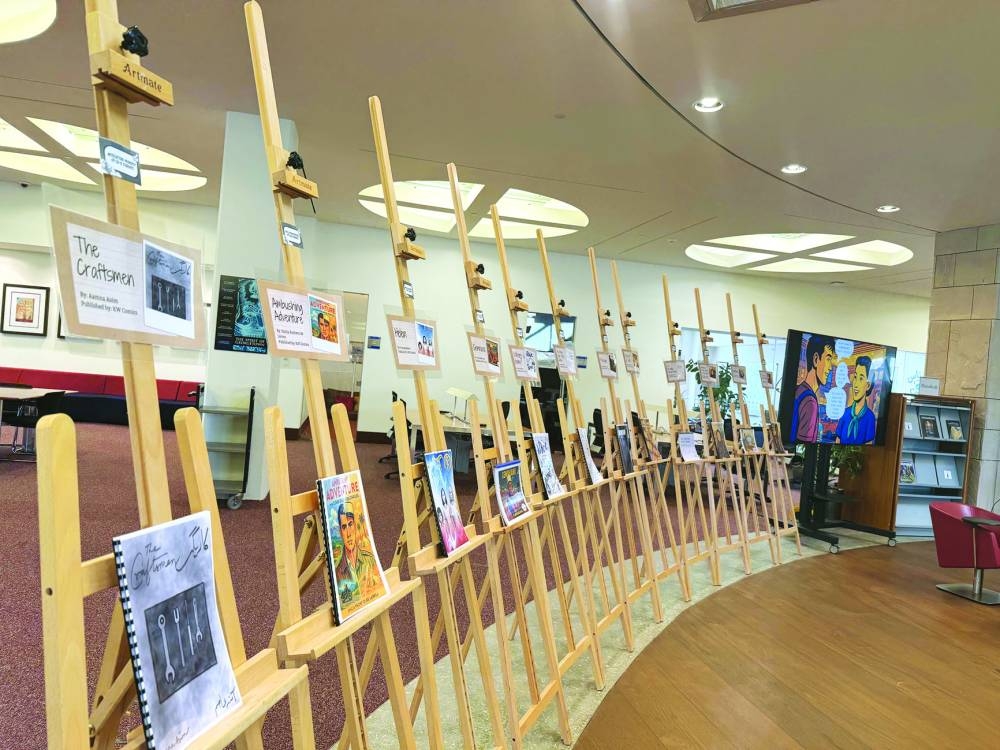This summer, the library at Georgetown University in Qatar (GU-Q) is the home of an exciting collection of graphic novels about historical events such as war, migration, and political upheaval, outcome of an innovative course taught: History and the Graphic Novel.
Taught by Dr Karine Walther, associate professor of history, the course studies graphic novels as secondary history resources. “Graphic novels can show history, not just describe it. There’s a unique emotional weight when you see history unfold through art, it feels more personal and real than just reading facts or dates,” said Mohamed Jaski, a culture and politics major with a minor in history, who was one of 12 students enrolled in the class.
Teaching history in novel and interesting ways is not new to Dr Walther, who was voted ‘Faculty Member of the Year’ by the graduating class at this year’s Tropaia senior award ceremony. “I first took Prof Walther during my freshman year for proseminar, and since then, she’s remained my absolute favourite professor,” said Jaski.
Another cornerstone of the class was a technical workshop on how to use Canva, Adobe Illustrator and Photoshop, and Artificial Intelligence to generate images and develop storyboards for their graphic novel, taught by associate director of the library, Robert Laws.
“The course introduced us to so many diverse graphic styles, which inspired me to blend techniques in my own way,” said Jaski. His graphic novel, titled “Maryam,” which explores the loss and grief of war, blends Marvel-style design with a transition to stark black-and-white visuals for a dramatic, immersive feel.
“Seeing the students take ownership of the history-making process is always the best part of a class,” said Dr Walther. “In this class, they interviewed a member of their family or a community member, and translated those memories into a graphic novel. Although I guided them through the process of creatively engaging with their own history in conversation with historical texts, they were the ones who made this class all that it could be.”
The course culminated in an exhibit of student work in the library, which, due to its essential role in supporting the class, had become an extension of the classroom.
The graphic novels produced were also printed professionally by the GU-Q bookstore and gifted to the students as a tangible reminder of the power of creative expression in academic settings.

Graphic novel display in the library.
